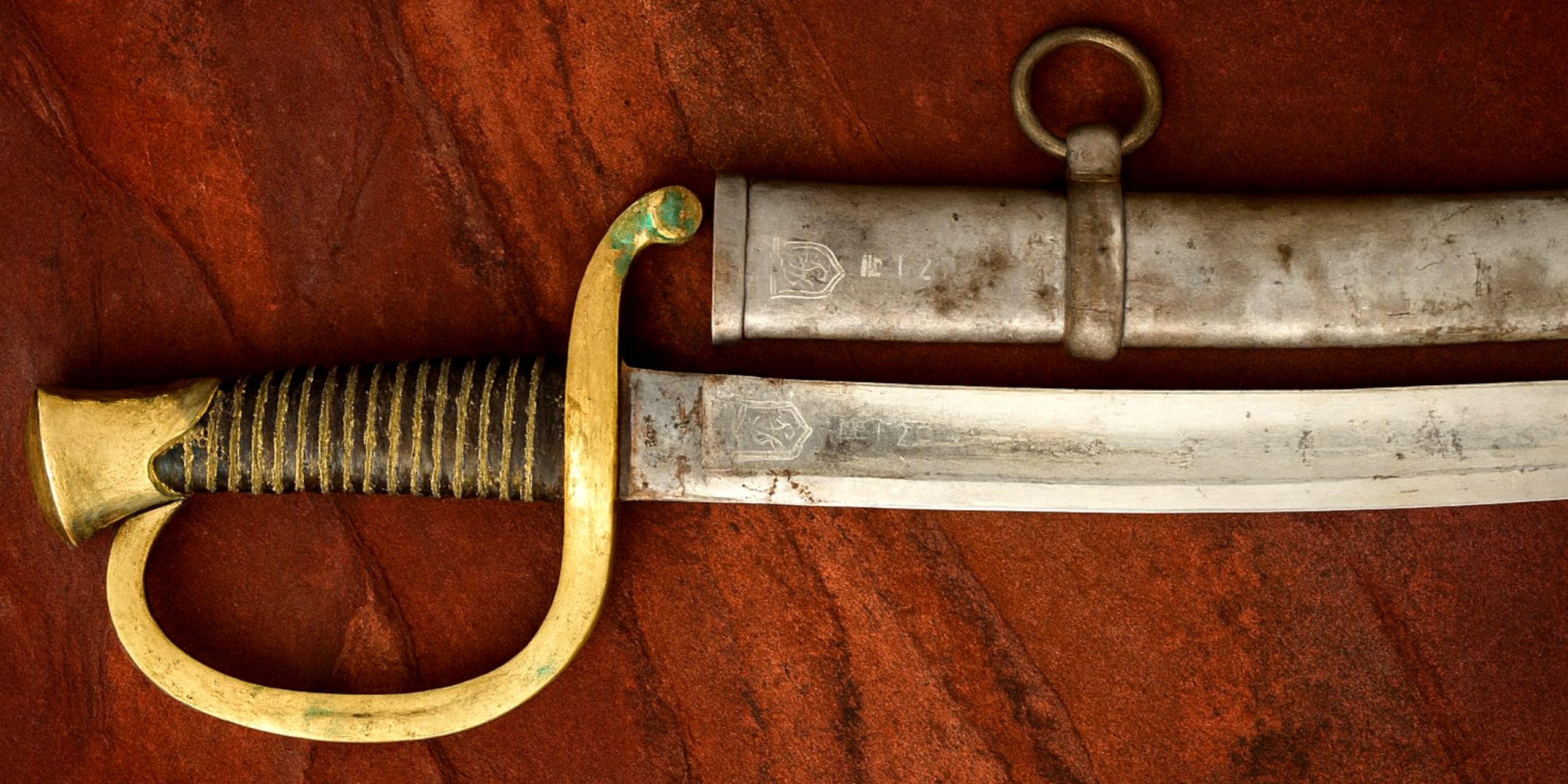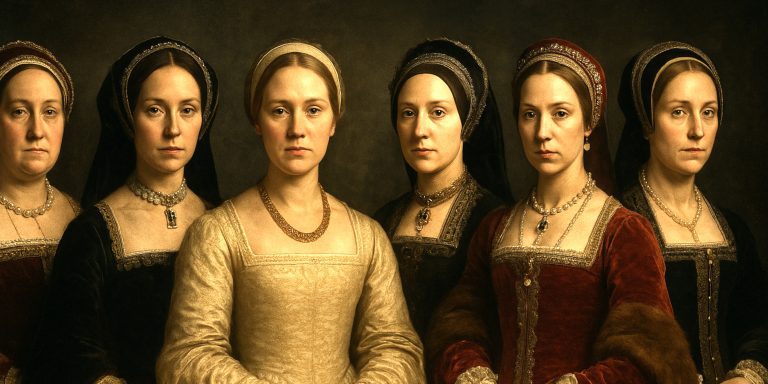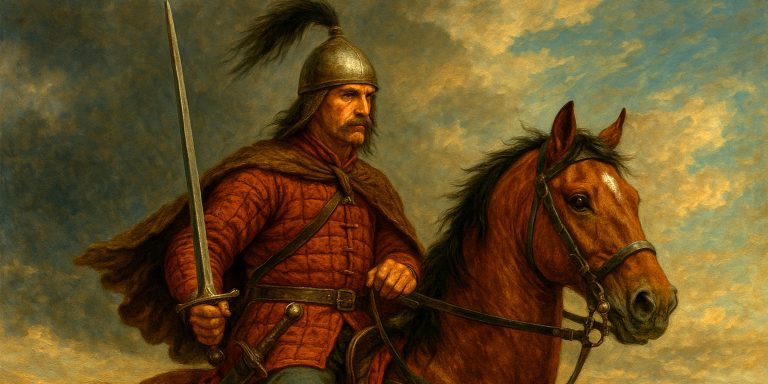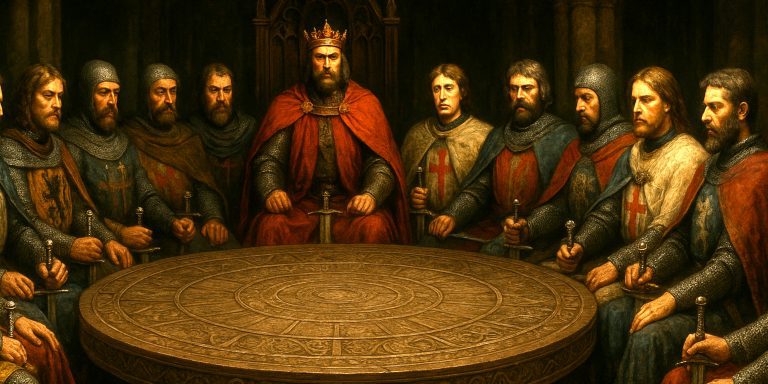
The US Model 1840 Artillery Sabre was a light, curved weapon designed for mounted artillery units in the mid-19th century. Smaller and lighter than the cavalry sabres of the same period, it served as both a defensive sidearm and a symbol of rank. The design drew heavily from European influences, particularly the French Model 1829 Artillery Sabre, which the Americans adapted for their own manufacturing methods and field needs. Though it saw limited use in actual combat, it remains a distinctive and collectible piece of United States military history.
Specifications
| Aspect | Detail |
|---|---|
| Type | Light sabre for artillery troops |
| Country of Origin | United States |
| Service Period | 1840s to late 19th century |
| Overall Length | Approx. 86 cm (34 in) |
| Blade Length | Approx. 73 cm (28.5 in) |
| Blade Curvature | Moderate curve with single fuller |
| Weight | Around 0.9–1.1 kg |
| Blade Material | Polished steel |
| Hilt | Brass knuckle-bow with leather-wrapped grip and brass wire |
| Scabbard | Brass or steel, sometimes leather-covered with brass fittings |
| Manufacturers | Ames Manufacturing Co., Horstmann, and several Solingen (German) makers under contract |
History and Evolution
- Origins:
The US Army sought a more practical weapon for artillerymen following the adoption of the heavier Model 1840 Cavalry Sabre. Artillery crews required a shorter, handier weapon suitable for working around guns and carriages. - Design Influence:
The American design followed the French Model 1829, retaining the curved single-edged blade and simple brass hilt. The aim was a weapon that could be wielded effectively in confined spaces or from horseback if needed. - Manufacture:
Early production came from Ames of Chicopee, Massachusetts, the leading US blade manufacturer of the period. Later examples were imported from Solingen, Germany, particularly during the Civil War when demand spiked. - Service Use:
Although the sabre was issued widely, artillerymen rarely used it in battle. Its primary role was ceremonial or for self-defence. Nonetheless, it became part of the iconic image of Union and Confederate artillery officers. - Post-War Period:
Production declined after the Civil War, and by the 1870s, most artillerymen carried revolvers instead. However, the sabre remained in limited ceremonial use into the early 20th century.
Advantages and Disadvantages
Advantages
- Compact and lightweight compared to cavalry sabres
- Durable and well-balanced for sidearm use
- Easy to draw and return to the scabbard in tight quarters
- Strong brass hilt offered good hand protection
- Elegant design with lasting collector appeal
Disadvantages
- Limited cutting power due to shorter blade
- Ineffective against heavy cavalry weapons
- Largely symbolic by the time of widespread firearm use
- Difficult to maintain in the field due to exposed leather grip
- Rarely decisive in combat situations
Comparison with Similar Weapons
| Weapon | Length | Primary Users | Purpose | Key Difference |
|---|---|---|---|---|
| US Model 1840 Artillery Sabre | 86 cm | Mounted artillery | Self-defence, ceremonial | Lighter and shorter |
| US Model 1840 Cavalry Sabre | 105 cm | Cavalry | Mounted combat | Heavier, greater reach |
| French Model 1829 Artillery Sabre | 85 cm | Artillery | General service | Direct design inspiration |
| US Model 1860 Light Cavalry Sabre | 97 cm | Cavalry | Combat and pursuit | Thinner blade, improved handling |
| British 1821 Artillery Sword | 84 cm | British artillery | Ceremonial and defensive | Straight blade, less curved design |
Legacy
The Model 1840 Artillery Sabre occupies a curious niche in American arms history. It was seldom drawn in anger, yet it represented the professionalism and uniformity of the growing US Army. Collectors admire it today not for battlefield glory but for craftsmanship and symbolism. Its presence in numerous Civil War photographs ensures its place as an enduring emblem of mid-19th-century artillerymen.
The sabre’s influence continued stylistically, shaping later American ceremonial swords used by artillery and engineering officers well into the 1900s.
Where to See
You can find examples of the Model 1840 Artillery Sabre in several major museums and collections:
- Smithsonian National Museum of American History, Washington, D.C.
- Springfield Armory National Historic Site, Massachusetts
- Museum of the Confederacy, Richmond, Virginia
- West Point Museum, New York
- Private collections and Civil War re-enactment groups often display reproductions and original pieces in excellent condition.
Collectors’ Guide and Auction Prices
Key Factors Influencing Value
- Manufacturer’s mark (Ames sabres often fetch a premium)
- Date and inspection stamps on the ricasso
- Blade condition and absence of pitting or sharpening
- Integrity of grip wrap and wire
- Scabbard originality and fit
Typical Market Values (as of 2025)
| Condition | Description | Estimated Value (GBP) |
|---|---|---|
| Excellent | Clean blade, clear markings, original scabbard | £900–£1,400 |
| Good | Minor wear, partial leather loss | £600–£900 |
| Fair | Some rust or replacement parts | £350–£600 |
| Poor | Damaged or heavily restored | £150–£300 |
Collector Notes
- Ames and Horstmann examples with dated blades between 1844 and 1860 are most sought after.
- German imports, while slightly less valuable, often feature superb Solingen steel.
- Reproductions exist but are generally easy to identify due to machine-etched markings and modern brass colouration.
- Proper storage in low humidity is essential, as original leather grips deteriorate easily.
The Seven Swords Takeaway
The US Model 1840 Artillery Sabre may not have shaped the outcome of any great battles, but it remains a finely crafted artifact of a transitional age between sword and firearm. It represents the balance of practicality, elegance, and discipline that defined the mid-century American soldier. For collectors and historians alike, it stands as a tangible reminder of the artistry and symbolism that persisted even as warfare changed forever.



